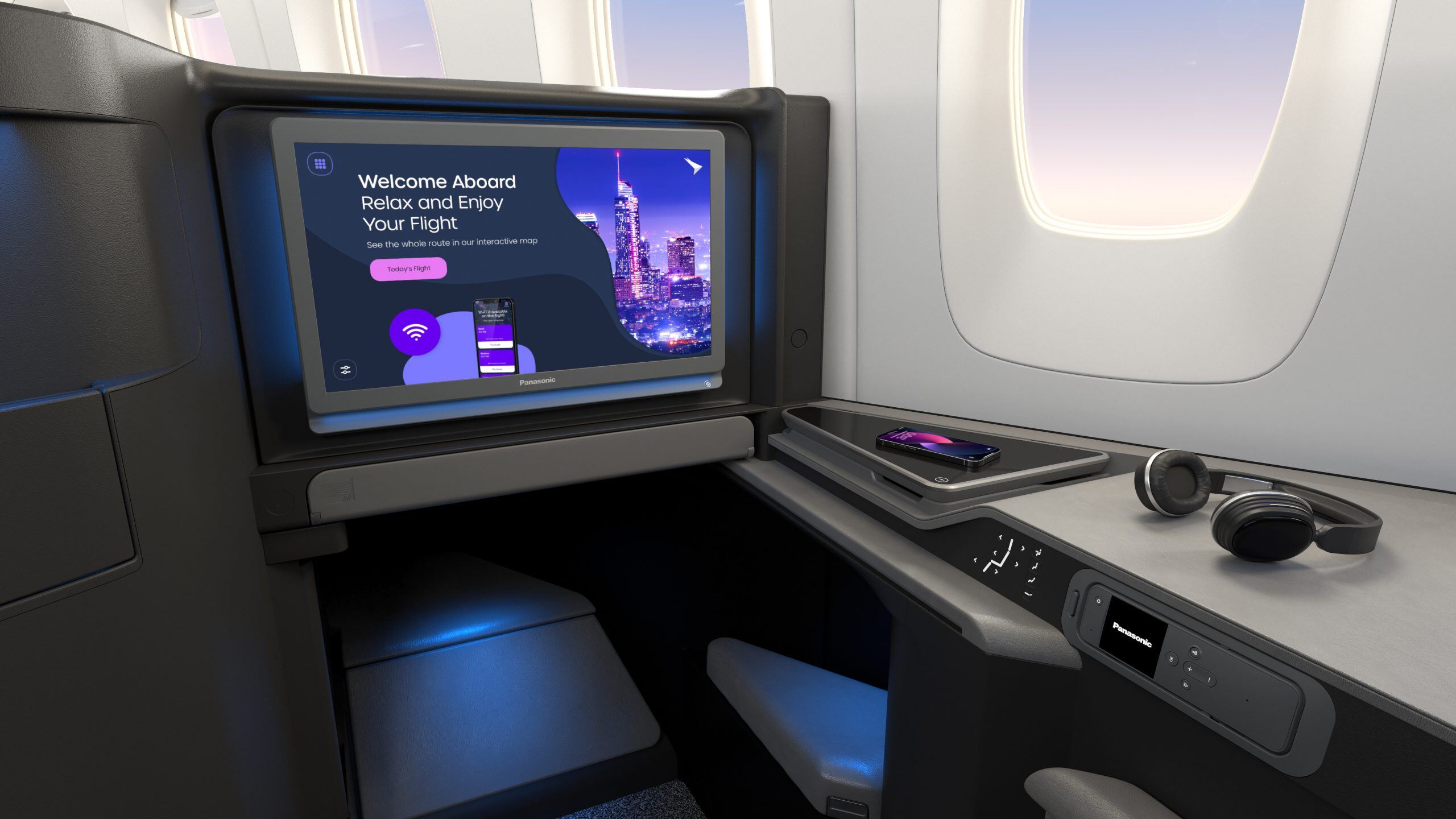Did you know that the first set of in-flight headphones looked less like a pair of Beats or AirPods, and more like a doctor's stethoscope?
In 1950s and early '60s, AVID Airline Products worked to develop a headset capable of allowing passengers to tune in to a movie's audio in their seats. The device consisted of two hollow, pneumatic rubber tubes capped by earpieces and connected to the audio feed in the seat's armrest—similar in style to some of the earliest headphones ever created. The sets debuted on TWA in 1963, and soon AVID was producing headsets for 97% of the world's airlines.
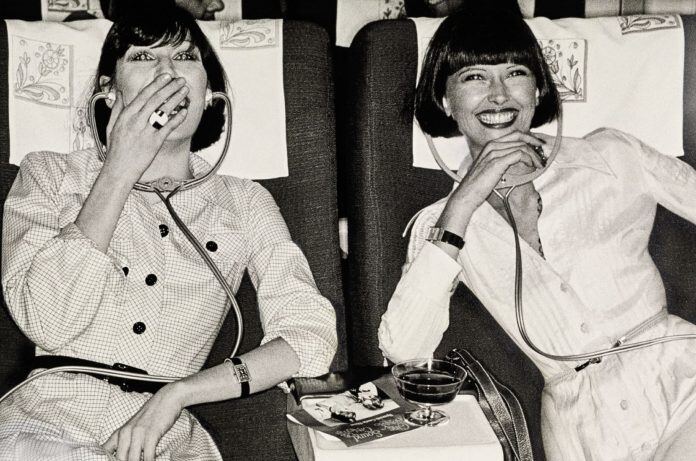
Instead of a heartbeat, airline passengers could hear the audio of the in-flight movies projected inside the aircraft. It was considered a marvel of technology.
Nine years later, a 1970 Pan Am advertisement showed a couple kissing, with a child seated behind them, all three of them wearing ear tubes. "Comfortable new earphones that never interfere with your affairs," reads the cheeky ad copy.
"We realize that our new headsets won't exactly stand the world on its ear. But they will add to your pleasure in flying with Pan Am. And that's all we care about," the ad continued.
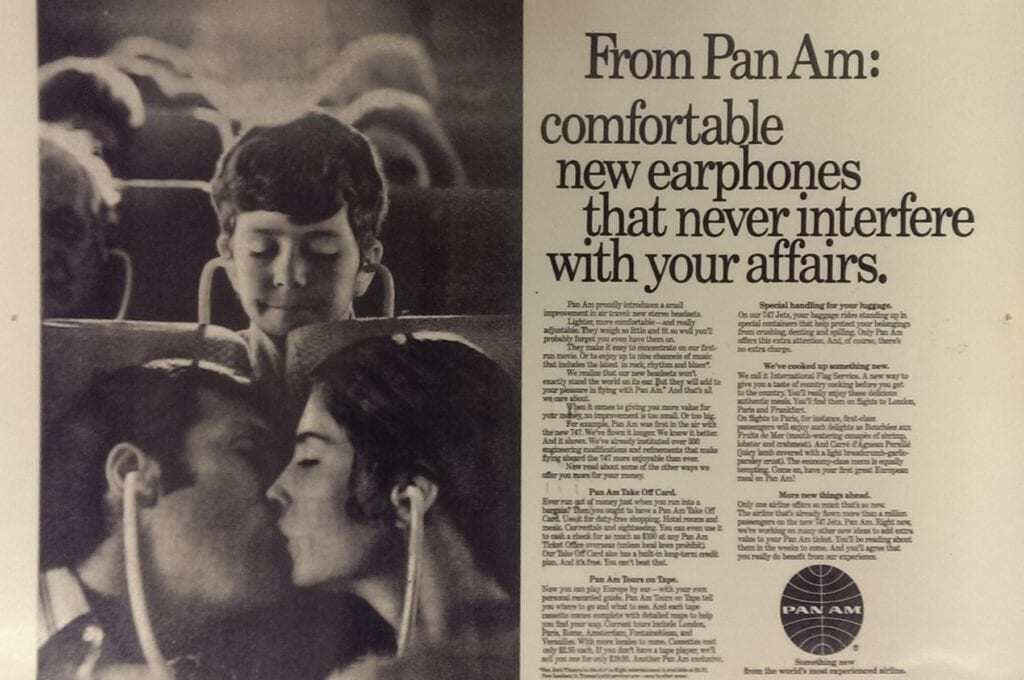
Ingenuity in the airline and audio industries saw the in-flight headset continuously refined over time, but it wasn't until 2003 when the final set of pneumatic earphones were pulled from circulation. By then, electronic audio—spurred by the 1979 introduction of the WalkMan and other portable audio devices with headphone jacks—had become the consumer preference, and airlines had raced to retrofit their aircraft.
As former CEO of AVID Mike Twist told APEX's blog in 2019, “The significant impact on our business was not the Walkman, but the headset packaged with the Walkman. That headset was the first mass-produced, low-cost electronic headset. Almost overnight all of IFE went from pneumatic to electronic."

Rapid-fire changes bring uncertainty to the cabin
Today's airline passengers can connect to audio without any wires at all, thanks to innovations like Panasonic's Astrova, which offers high-fidelity audio through both wired connections and by Bluetooth—an excellent companion to the visual quality of Astrova's best-in-class 4K OLED seatback screens.
However, it took considerable time and technical innovation to be able to develop such high-quality cabin audio.
It wasn't so long ago when most aircraft carried the double- and triple-pronged audio jack, and you may even find some aircraft with these types of audio input today. Some in the industry have speculated that the development of the two- and three-pin models—when most commercial headphones used a single 3.5mm auxiliary (aux) jack—was to deter theft. Another idea is that the multi-pin system ensured at least some audio could get through even if an onboard connection breaks. Simple Flying also hypothesizes that it may simply have been a holdover from the pneumatic earphones days.
Often, though, the airline-provided multi-pronged in-flight headsets were uncomfortable, with poor audio quality, and even painful to wear for long periods of time. And, sometimes they were no match for cabin noises like the ever-present din of white noise, crying babies, and chatty passengers. As audio company Bose notes, "Electronic headphones could deliver superior sound to fliers, but aeroplane cabins were too noisy to hear it."
The wider consumer marketplace of the 1980s, 1990s, and early 2000s saw the widespread adoption of personal audio devices like personal cassette players, CD players, and iPods equipped with conventional aux jacks. This coincided with the electronics industry's push to develop new, more comfortable, higher-performing headphone and earphone models.
These trends eventually led many airlines to retrofit their cabins with the universal standard 3.5mm aux jack—a costly and time-consuming endeavor, indeed.
But the innovation hasn't stopped there.
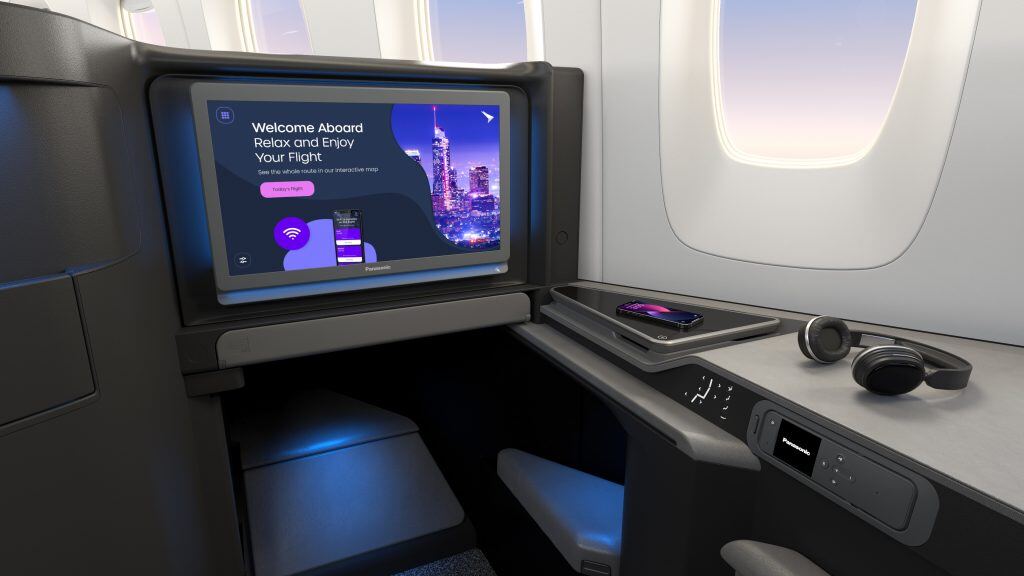
The push for wireless
Apple's decision to remove the aux jack entirely from the iPhone in 2016 changed the game yet again, pushing for greater adoption of wireless headphones—most notably, Apple's AirPods. While the company continues to sell an adapter (dongle) to allow people to continue using conventional wired headphones featuring the aux cable, the message is clear: wireless is the future.
Indeed, new market research estimates that the global wireless earphones market will grow from $4.89 billion in 2022 to $5.19 billion in 2023, and that it will top $7.05 billion in 2027.
These wider market changes are fast, sweeping, and have a major impact on aircraft cabin design and technology, keeping airlines and OEMs on their toes.
Today, airline passengers travel with their own electronic devices and often, their own headphones and earbuds. The BYOD model hasn't made solving passengers' in-flight audio needs any simpler, though. If anything, it means there are more competing audio connection types for which airlines need to adjust—a challenge we recently saw play out with electrical and USB power connections.
Passengers want to be able to move seamlessly between their own devices and the built-in seatback system, and wired audio poses a challenge to that. In fact, it has led to the creation of stop-gap Bluetooth adapters that plug in to aux jacks.
With this in mind, the introduction of Bluetooth to the airline cabin is the clear path forward, but it comes with its own technical feats.
For one, signal interference—both with neighboring passengers, and with crew and flight equipment—has long been a prominent concern in the industry.
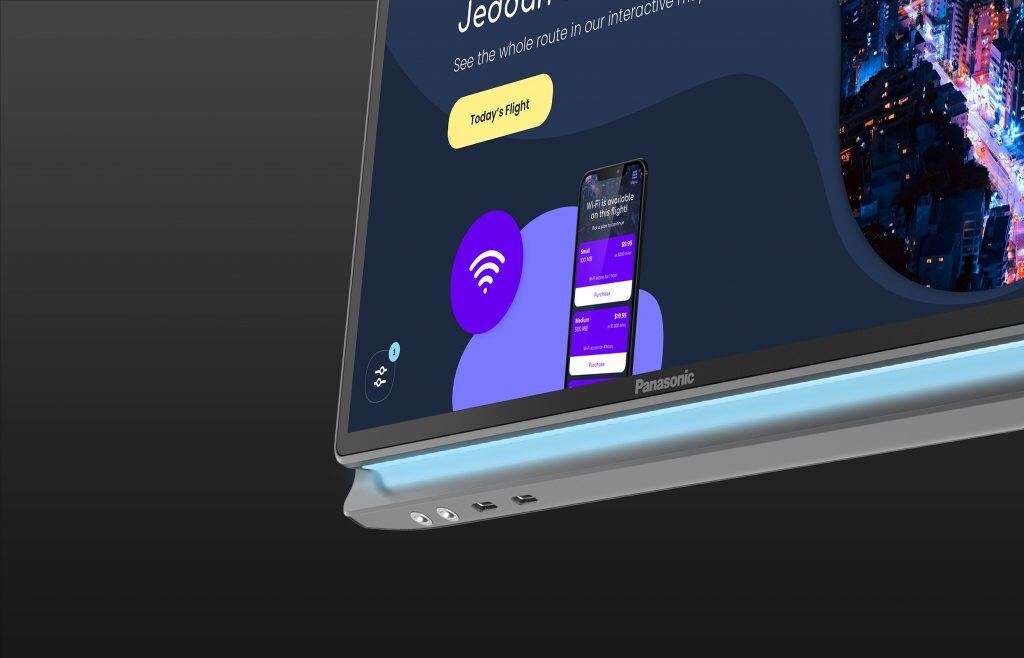
With Astrova, Panasonic has created a true wireless high-fidelity audio solution with customizable options that allow passengers to tune in however they please. Airlines can choose from hardwired and wireless audio and in-seat charging, and various combinations therein, making Astrova the leading edge on in-flight entertainment.
We can't promise Bluetooth will be the leading audio solution forever, but we can promise that whatever comes next in the consumer audio space, Panasonic will be there to bring it to airline cabins around the world.
